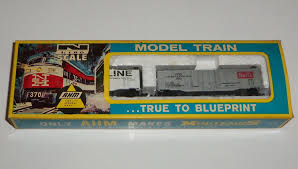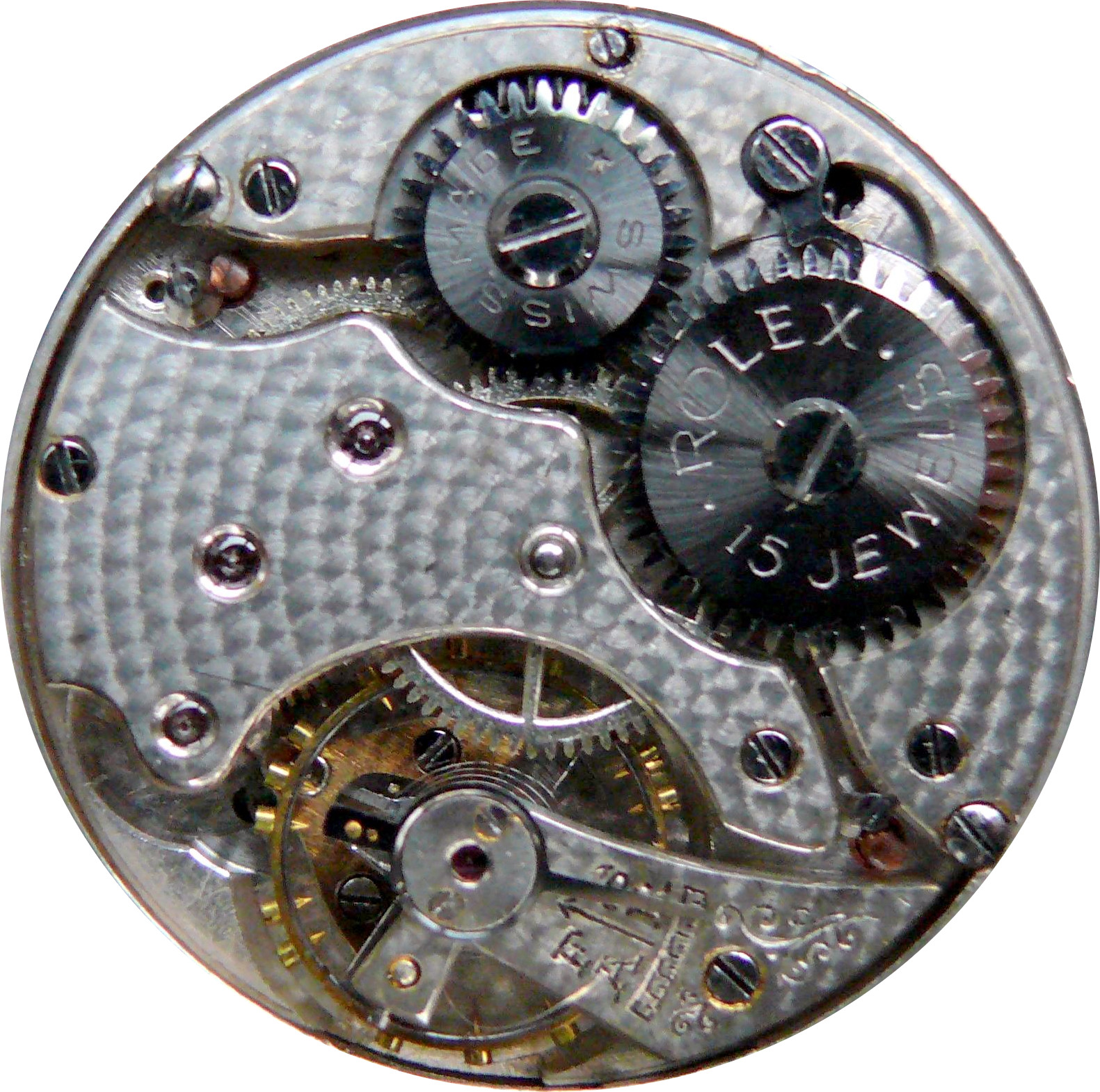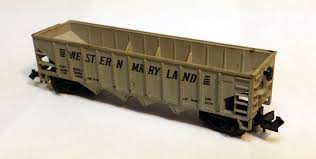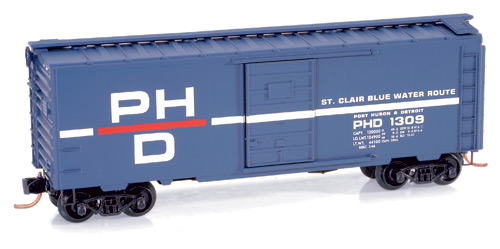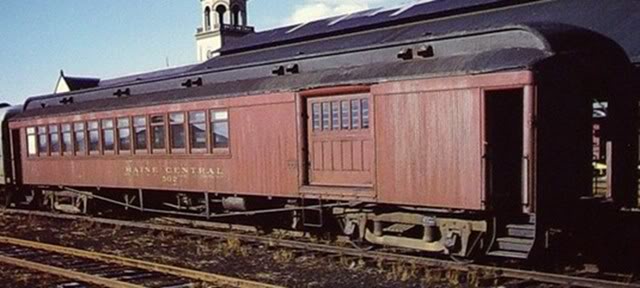Con-Cor - 0003-5221X - Passenger Car, Heavyweight, Combine - Undecorated
| Stock Number | 0003-5221X |
| Original Retail Price | $32.98 |
| Brand | Con-Cor |
| Manufacturer | Rivarossi |
| Body Style | Rivarossi Passenger Heavyweight Combine |
| Prototype Vehicle | Passenger Car, Heavyweight, Combine (Details) |
| Road or Company Name | Undecorated (Details) |
| Paint Color(s) | Tuscan Red with Black Roof |
| Coupler Type | MT Magne-Matic Knuckle |
| Wheel Type | Chemically Blackened Metal |
| Wheel Profile | Small Flange (Low Profile) |
| Item Category | Passenger Cars |
| Model Type | Heavyweight |
| Model Subtype | Generic |
| Model Variety | Combine |
| Prototype Region | North America |
| Prototype Era | NA Era II: Late Steam (1901 - 1938) |
| Scale | 1/160 |
Model Information:
Introduced in 1967 as Atlas-Rivarossi. Underframe marked Atlas. Sold under the same stock number with Atlas or Rivarossi brand until 1975.
After 1976, sold only as Rivarossi, with new Rivarossi stock numbers and underframe marked Rivarossi. Some boxes from the transition time can have both Atlas and the new Rivarossi stock numbers affixed on it.
This body style was then used by Con-Cor after Atlas stopped selling it.
The model is based on an ATSF "rider" car.
After 1976, sold only as Rivarossi, with new Rivarossi stock numbers and underframe marked Rivarossi. Some boxes from the transition time can have both Atlas and the new Rivarossi stock numbers affixed on it.
This body style was then used by Con-Cor after Atlas stopped selling it.
The model is based on an ATSF "rider" car.
Prototype History:
Heavyweight Passenger Cars were the prevalent style of railcars used for passenger service during the interwar period. They were constructed of concrete, wood and steel. They were much heavier than modern passenger cars due to the materials used in their construction. They were so heavy that they ofthen (but not always) required three-axle bogies to support them.
A combine car in North American parlance, most often referred to simply as a combine, is a type of railroad car which combines sections for both passengers and freight. Most often, it was used on short lines to carry passengers and their luggage, as a full car would not have been cost effective. One half (or less) of the car is built like a baggage car while the other half of the car is a regular passenger car. This type of combine is referred to as a coach-baggage. Another common type of combine in railroad use was the coach-RPO. A portion of this type of car was configured as a railway post office while the rest of the car was configured as a coach.
From Wikipedia
A combine car in North American parlance, most often referred to simply as a combine, is a type of railroad car which combines sections for both passengers and freight. Most often, it was used on short lines to carry passengers and their luggage, as a full car would not have been cost effective. One half (or less) of the car is built like a baggage car while the other half of the car is a regular passenger car. This type of combine is referred to as a coach-baggage. Another common type of combine in railroad use was the coach-RPO. A portion of this type of car was configured as a railway post office while the rest of the car was configured as a coach.
From Wikipedia
Road Name History:
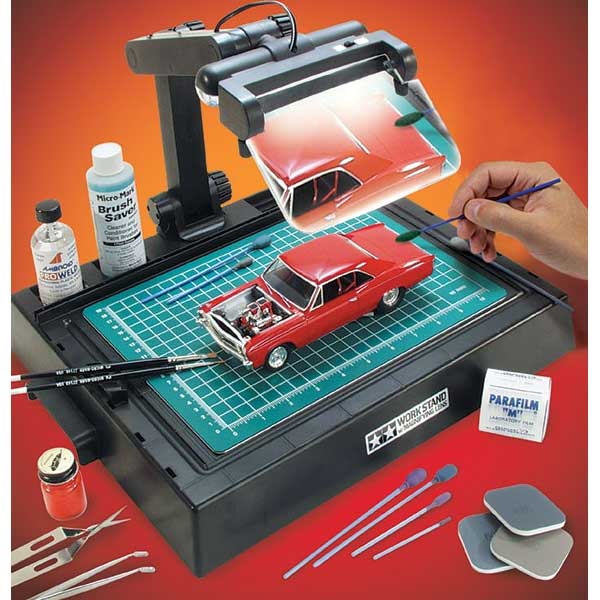 Although they may be molded in color, unpainted and unlettered, undecorated products are marketed to modelers who seek to custom decorate their models for private roads and/or road and/or company names that were not commercially produced by any of the major manufacturers.
Although they may be molded in color, unpainted and unlettered, undecorated products are marketed to modelers who seek to custom decorate their models for private roads and/or road and/or company names that were not commercially produced by any of the major manufacturers.
Undecorated models are frequently also unassembled or only partially assembled and required modelers to be comfortable with glue, paint and sometimes solder in order to prepare their models for display. Materials for these models can vary but often include plastic, pewter and resin. Models may or may not come with decals or other decorations such as plastic signage, railings and ladders to enhance the appearance of the final product.

Undecorated models are frequently also unassembled or only partially assembled and required modelers to be comfortable with glue, paint and sometimes solder in order to prepare their models for display. Materials for these models can vary but often include plastic, pewter and resin. Models may or may not come with decals or other decorations such as plastic signage, railings and ladders to enhance the appearance of the final product.
Brand/Importer Information:
Con-Cor has been in business since 1962. Many things have changed over time as originally they were a complete manufacturing operation in the USA and at one time had upwards of 45 employees. They not only designed the models,but they also built their own molds, did injection molding, painting, printing and packaging on their models.
Currently, most of their manufacturing has been moved overseas and now they import 90% of their products as totally finished goods, or in finished components. They only do some incidental manufacturing today within the USA.
Important Note: The Con-Cor product numbering can be very confusing. Please see here in the article how to properly enter Con-Cor stock numbers in the TroveStar database.
Currently, most of their manufacturing has been moved overseas and now they import 90% of their products as totally finished goods, or in finished components. They only do some incidental manufacturing today within the USA.
Important Note: The Con-Cor product numbering can be very confusing. Please see here in the article how to properly enter Con-Cor stock numbers in the TroveStar database.
Item created by: gdm
on 2017-07-24 10:52:31
If you see errors or missing data in this entry, please feel free to log in and edit it. Anyone with a Gmail account can log in instantly.
If you see errors or missing data in this entry, please feel free to log in and edit it. Anyone with a Gmail account can log in instantly.





